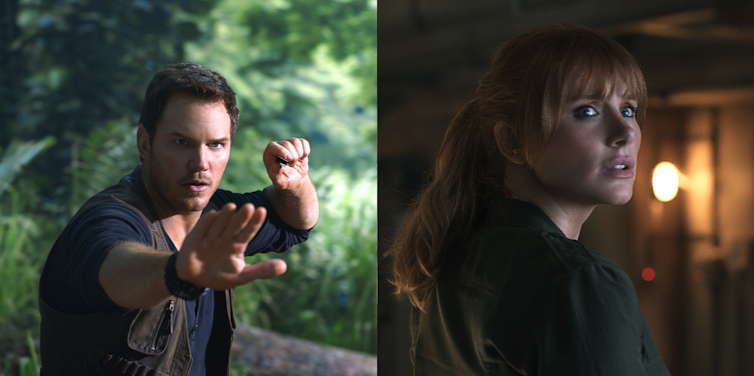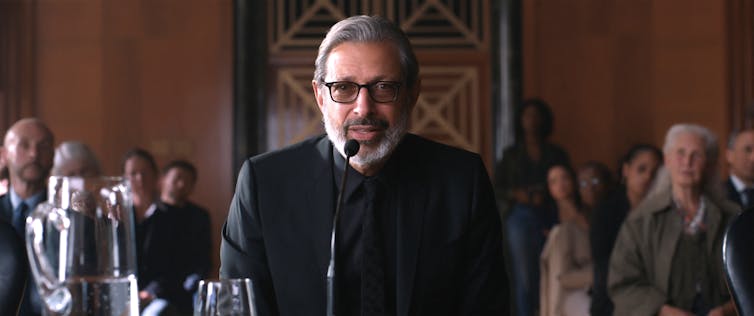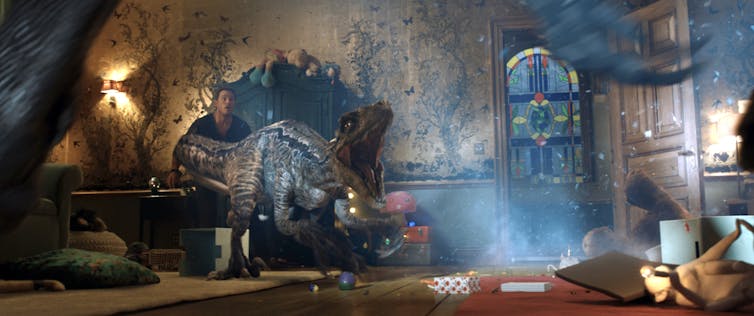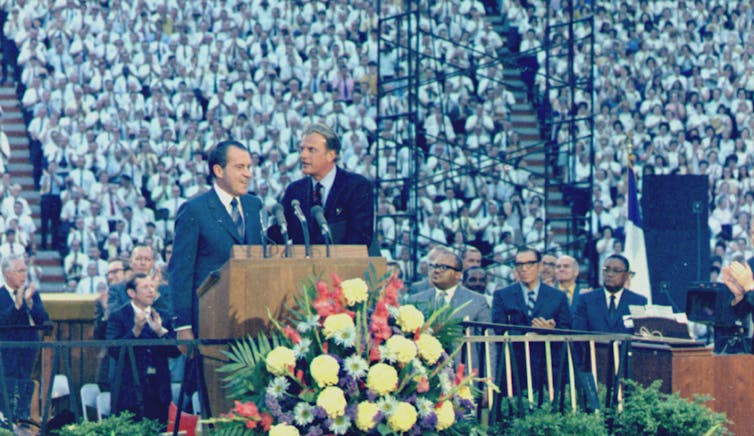
The Space Shuttle democratized spaceflight
The Space Shuttle was an amazing flight vehicle: It launched like a rocket into Low Earth Orbit in only eight minutes, and landed softly like a glider after its mission. What is not well known is that the Space Shuttle was an equalizer and enabler, opening up space exploration to a wider population of people from planet Earth.
I graduated with an engineering degree from the University of Washington in 1971 and, by 1976, I was a young engineer working on the first Space Shuttle, Columbia, with Rockwell International at Edwards Air Force Base, in California. I helped to design and produce the thermal protection system – those heat resistant ceramic tiles – which allowed the shuttle to re-enter the Earth’s atmosphere for up to 100 flights.
I knew from my first day at Rockwell that this vehicle had been designed for both men and women. A NASA engineer at the Langley Research Center gave me a very early “heads up” in 1973 that they would eventually select women astronauts for the Space Shuttle. In the 1970s there were visionary men and women in NASA, government and in the general public, who saw a future for more women in science and engineering, and for flying into space. Women were not beating down the door to be included in the Space Shuttle program, we were being invited to be an integral part of a larger grand design for exploring space.
1978: Becoming an astronaut
The selection process for the first class of Space Shuttle astronauts, to include women, opened in 1977. NASA approached the recruitment process with a large and innovative publicity campaign encouraging men and women of all ethnic backgrounds to apply. One of NASA’s recruiters was actress Nichelle Nichols who played Lt. Ohura on the “Star Trek” series, which was popular at the time. Sally learned about NASA’s astronaut recruitment drive through an announcement, possibly on a job bulletin board, somewhere at Stanford University. Sally had been a talented nationally ranked tennis player, but her passion was physics. The opportunity to fly into space intrigued her and looked like a challenge and rewarding career she could embrace.
Sally and I arrived at NASA at the same time in 1978 – she as part of the “TFNG” (“Thirty-Five New Guys”) astronaut class and I as a newly minted mission controller, training to support the Space Shuttle. I had already been in the aerospace industry for several years and had made my choice for “space” at the age of 9 on a cattle ranch in Washington state. I also applied for the 1978 astronaut class, but was not selected until 1980.
Sally and I connected on the Flight Crew Operations co-ed softball team. We both played softball from an early age and were both private pilots, flying our small planes together around southeast Texas. We also often discussed our perspectives on career selection, and how fortunate we were to have teachers and parents and other mentors who encouraged us to study math and science in school – the enabling subjects for becoming an astronaut.
STS-7: June 18 1983
While Sally was honored to be picked as the first woman from her class to fly, she shied away from the limelight. She believed that she flew for all Americans, regardless of gender, but she also understood the expectations on her for being selected “first.” As she flew on STS-7, she paid tribute to those who made it possible for her to be there: to her family and teachers, to those who made and operated the Space Shuttle, to her crewmates, and to all of her astronaut classmates including Dr. Kathy Sullivan, Dr. Rhea Seddon, Dr. Anna Fisher, Dr. Shannon Lucid, and Dr. Judy Resnick (who lost her life on Challenger). With all of the attention, Sally was a gracious “first.” And the launch of STS-7 had a unique celebratory flair. Signs around Kennedy Space Center said “Fly Sally Fly,” and John Denver gave a special concert the night before the launch, not far from the launch pad.
Continuing the momentum
One of the topics that Sally and I discussed frequently was why so few young girls were entering into math, technology, science and engineering – which became known as STEM careers in the late 1990s. Both of us had been encouraged and pushed by male and female mentors and “cheerleaders.” By 1972, companies with federal contracts were actively recruiting women engineers. NASA had opened up spaceflight to women in 1978, and was proud of the fact that they were recruiting and training women as astronauts and employing them in engineering and the sciences.
National needs for STEM talent and supportive employment laws were creating an environment such that if a young woman wished to become an aerospace engineer, a physicist, a chemist, a medical doctor, an astronomer or an astrophysicist, they could. One might have thought that Sally’s legendary flight, and those of other women astronauts over the last 35 years might have inspired a wave of young women (and men) into STEM careers. For example, when Sally flew into space in 1983, a 12-year-old middle school girl back then would now be 47. If she had a daughter, that daughter might be 25. After two generations, we might have expected that there would be large bow wave of young energized women entering into the STEM careers. But this hasn’t happened.
Rather, we have a growing national shortage of engineers and research scientists in this nation, which threatens our prosperity and national security. The numbers of women graduating in engineering grew from 1 percent in 1971 to about 20 percent in 35 years. But women make up 50 percent of the population, so there is room for growth. So what are the “root causes” for this lack of growth?
K-12 STEM education
Many reports have cited deficient K-12 math and science education as contributing to the relatively stagnant graduation rates in STEM careers.
Completing four years of math in high school, as well as physics, chemistry and biology is correlated with later success in science, mathematics and engineering in college. Without this preparation, career options are reduced significantly. Even though I graduated from a small school in rural Washington state, I was able to study algebra, geometry, trigonometry, math analysis, biology, chemistry and physics by the time I graduated. Those were all prerequisites for entry into the University of Washington College of Engineering. Sally had the same preparation before she entered into physics.
Research has shown that middle school is a critical period for young boys and girls to establish their attitudes toward math and science, to acquire fundamental skills that form the basis for progression into algebra, geometry and trigonometry, and to develop positive attitudes toward the pursuit of STEM careers. When Dr. Sally Ride retired from NASA, she understood this, and founded Imaginary Lines and, later, Sally Ride Science, to influence career aspirations for middle school girls. She hosted science camps throughout the nation, exposing young women and their parents to a variety of STEM career options. Sally Ride Science continues its outreach through the University of California at San Diego.
Challenging old stereotypes and honoring Sally’s legacy

In a recent discussion with an all-girl robotics team competing at NASA, I asked the high school girls if they had support from teachers and parents, and they all said “yes.” But then, they asked, “Why doesn’t society support us?” I was puzzled and asked them what they meant. They then directed me to the internet where searches on engineering careers returned a story after story of describing “hostile work environments.”
Sadly, most of these stories are very old and are often from studies with very small populations. The positive news, from companies, government, universities and such organizations as the National Academy of Engineers, Physics Girl and Society of Women Engineers, rarely rises to the top of the search results. Currently, companies and laboratories in the U.S. are desperate to employ STEM qualified and inspired women. But many of our young women continue to “opt out.”
Young women are influenced by the media images they see every day. We continue to see decades-old negative stereotypes and poor images of engineers and scientists on television programs and in the movies.
Popular TV celebrities continue to boast on air that they either didn’t like math or struggled with it. Sally Ride Science helps to combat misconceptions and dispel myths by bringing practicing scientists and engineers directly to the students. However, in order to make a more substantial difference, this program and others like it require help from the media organizations. The nation depends upon the technology and science produced by our scientists and engineers, but social media, TV hosts, writers and movie script developers rarely reflect this reality. So it may be, that in addition to K-12 challenges in our educational system, the “outdated stererotypes” portrayed in the media are also discouraging our young women from entering science and engineering careers.
Unlimited opportunities in science and engineering
The reality? More companies than ever are creating family-friendly work environments and competing for female talent. In fact, there is a higher demand from business, government and graduate schools in the U.S. for women engineers and scientists than can be met by the universities.
Both Sally and I had wonderful careers supported by both men and women. NASA was a great work environment and continues to be – the last two astronaut classes have been about 50 percent female.
About Today's Contributor:
Bonnie J. Dunbar, NASA astronaut (Ret) and TEES Distinguished Research Professor, Aerospace Engineering, Texas A&M University
This article was originally published on The Conversation.
Related Videos:

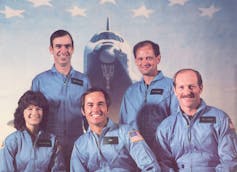
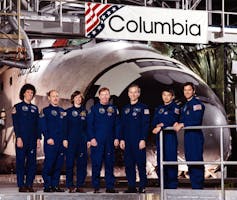
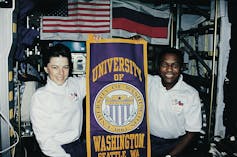
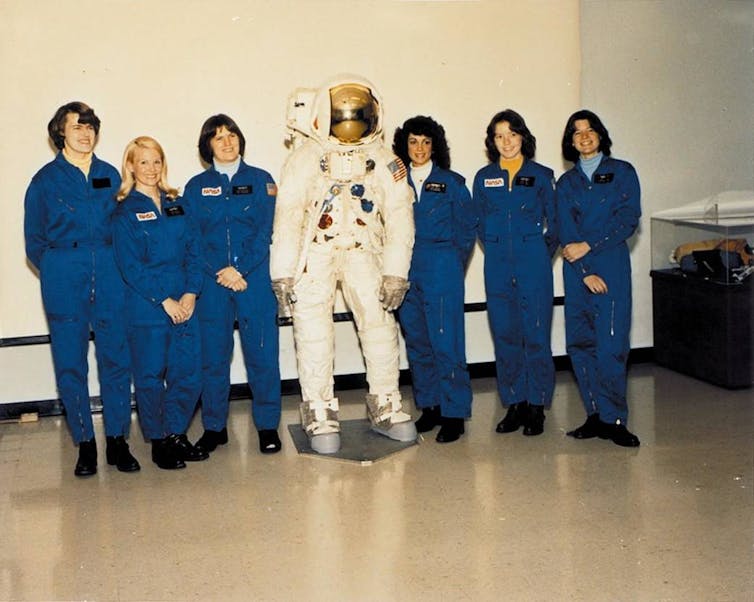
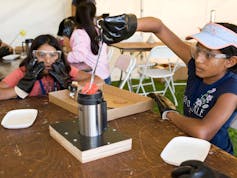
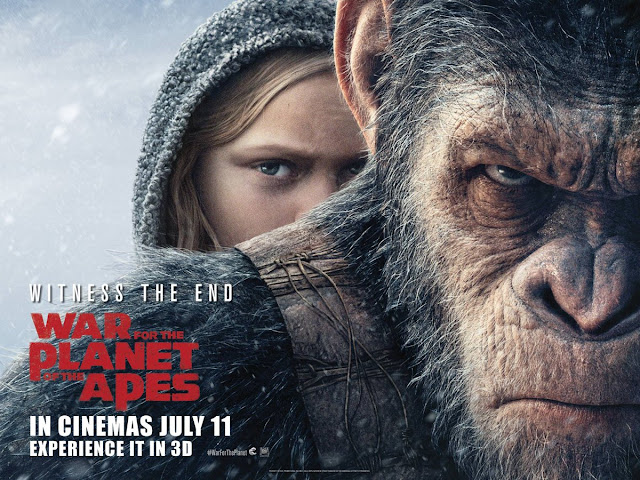
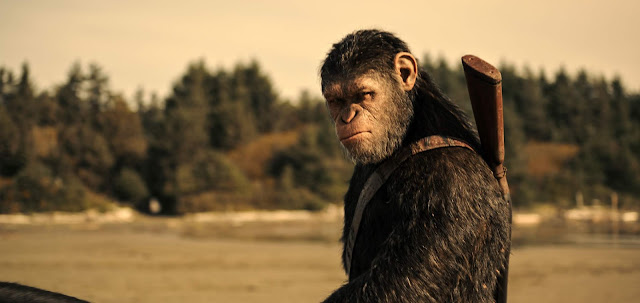
 There’s a new kid in town in Jurassic World: Fallen Kingdom. (Universal Studios and Amblin Entertainment, Inc. and Legendary Pictures Productions, LLC.)
There’s a new kid in town in Jurassic World: Fallen Kingdom. (Universal Studios and Amblin Entertainment, Inc. and Legendary Pictures Productions, LLC.)
